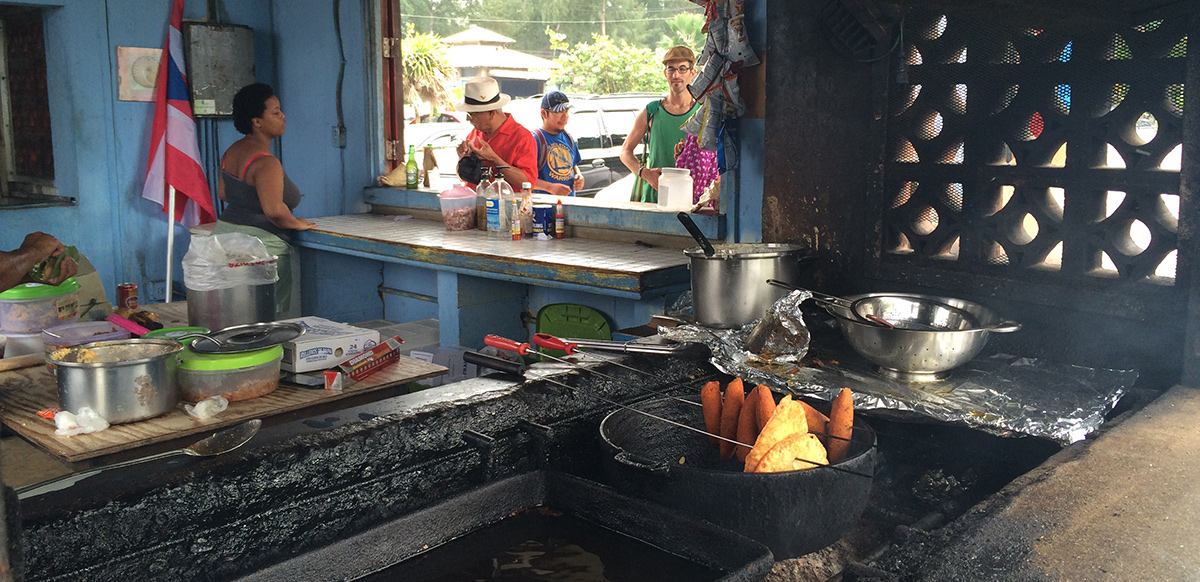Puerto Rican Cuisine
 The foods you find in Puerto Rico have become a unique blend of traditional recipes from the several distinct cultures of those who have come to the island over the centuries. There is a heavy blending of the Spanish and Mexican cuisine influencing the overall taste. These have been modified with twists from the Africans who came unwillingly to these shores and the Taino Indians who were here before the Europeans.
The foods you find in Puerto Rico have become a unique blend of traditional recipes from the several distinct cultures of those who have come to the island over the centuries. There is a heavy blending of the Spanish and Mexican cuisine influencing the overall taste. These have been modified with twists from the Africans who came unwillingly to these shores and the Taino Indians who were here before the Europeans.
Puerto Rico has a wide variety of indigenous foods to pick and choose from. Pick your pleasure from papaya, coriander, plantains or the more unusual nispero, apio or the potato-like yautias which is the fleshy root of an indigenous tree. The natives call their style “cocina criolla” or Creole cooking.
While the original Tainos relied heavily on tropical fruits, corn and seafood, both fish and seaweed, the coming of the Spanish in the late fifteenth century added the meat of cattle and pigs to the diet. Rice, wheat and olive oil became staples. With the introduction of African slaves to the population, okra began to flourish and add its distinctive presence to the average family’s diet.
Probably the most well known traditional dish from the island is asopao. This, too thick to be soup, dish begins with either chicken or shellfish adds pigeon peas into the mix and is heavily spiced with garlic, paprika and oregano. Sweet and hot peppers are blended in along with olives, onions and pimientos. Topped off with peas or asparagus, this creates a gumbo that can see a person through the day.
With the warm, moist climate and tropical sun a plethora of vegetables, both native and imported add to the seafood, fish and poultry that is the islanders favorite meat. Disdaining rigid formula, the Puerto Rican cook is not hesitant to experiment with new forms of seasoning to keep their meals always exciting and enjoyable.
——————
Puerto Rico is an island nation that is officially a territory of the United States. Puerto Rican cuisine has evolved from several strong influences, including those of the original peoples, such as the Tainos, and the Spanish conquerors that drove most of the natives out and enslaved the remaining. African and Caribbean influence is also reflected in the cuisine of the island, which has also been shaped significantly by its climate and geology.
Cocina criolla, one of the main cuisine styles particular to the island has deep roots, extending far back to the native Tainos and Arawaks. Their culinary traditions were based tropical fruits, native vegetables, seafood, and corn. With the Spanish came a host of other ingredients that expanded the criolla style. These included olive oil, rice, wheat and meats, such as pork and beef. As enslaved African peoples were imported for work on the sugar cane plantations, their culinary traditions took root as well, and their contributions, which included taro and okra, became assimilated into the whole of criolla cuisine.
Many of the island’s main dishes are seasoned with adobo and sofrito, spice mixtures that impart those flavors that the island is so well known for. Adobo, which can vary from cook to cook, or if bought prepared, from manufacturer to manufacturer, generally consists of black peppercorns, oregano, salt, garlic, olive oil, and lime juice. When bought prepared in powdered form, most include salt, powdered garlic, citric acid, pepper, oregano, turmeric and MSG, which is a good reason to spend a little time making your own if experimenting with Puerto Rican cuisine at home. While generally used for seasoning meats, it is considered to be a sort of all-purpose seasoning mixture.
Sofrito is made from onions, garlic, cilantro, peppers, and often includes achiote, which is from the seeds of the annatoo plant, and helps to produce a bright yellow color in the finished product. This, too, is used in a variety of dishes, ranging from meat dishes to soups to standard forms of beans and rice.
One pot dishes, or stews, are common to Puerto Rican cuisine. These are often made of meats, and flavored with a variety of spices and ingredients in addition to adobo and sofrito. Among these are Spanish olives stuffed with pimiento, sweet chili peppers, capers, potatoes, onions, garlic, fresh cilantro, and occasionally raisins.
Chicken with rice is a dish that has become a Puerto Rican specialty, with many families having their own special style, handed down from generation to generation. Chicken is a main ingredient of many criolla dishes, and these dishes, while careful attention is given to spicing techniques, rarely are they what could be termed hotly spiced.
Naturally, seafood is an important part of the island cuisine. Fried fish is often served with a special sauce made of olives, olive oil, onions, pimientos, capers, tomato sauce, vinegar, garlic and bay leaves. Broiled, steamed or grilled fish is lightly seasoned, if at all, during the cooking process and served with a splash of lime juice with perhaps just a hint of garlic.
Puerto Rican cuisine has many facets, arising from the island’s long, complex history. The blend of native culinary traditions with those of the European settlers and the enslaved African populations that they brought with them has resulted in a unique and flavorful cuisine that is beloved by many.
Copied with permission from: http://plrplr.com/51361/puerto-rican-cuisine/
